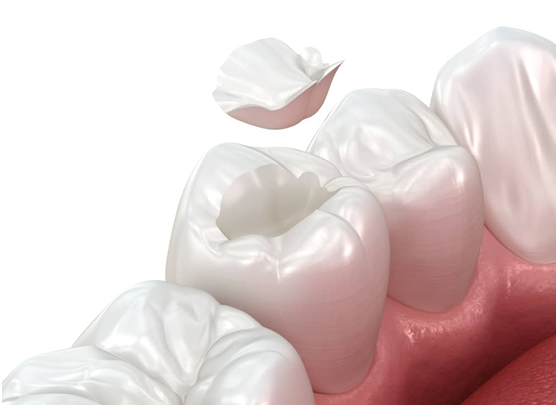Dental restorations have made tremendous strides over the years, offering more precise and aesthetically pleasing solutions for damaged or decayed teeth. When it comes to dental restorations, there’s often a debate between porcelain inlays and composite fillings. Both serve as effective solutions for teeth affected by decay, wear, or damage, but they each come with distinct advantages.
What’s the main difference between porcelain fillings and composite fillings?
Porcelain fillings, often referred to as inlays or onlays, are custom-made in dental labs and then bonded to the damaged tooth. They’re durable, stain-resistant, and can match the natural tooth color. Composite fillings, on the other hand, are resin-based fillings that are directly applied and sculpted onto the tooth in the dental chair, then cured with light.
Porcelain inlays:
- Durability: Porcelain inlays are highly durable and can last longer than composite fillings.
- Resistance to staining: Porcelain is more resistant to staining compared to composite materials, maintaining a more natural appearance over time.
- Precise fit: Porcelain inlays are custom-made in a dental laboratory to fit precisely into the prepared cavity, which can provide a better fit and seal against bacteria compared to direct composite fillings.
- Strength: Porcelain is a strong material, providing additional strength to the tooth and potentially reducing the risk of further damage.
- However, there are also some considerations with porcelain inlays:
- Cost: Porcelain inlays are typically more expensive than composite fillings because of the material used and the process involved.
Composite fillings:
- Aesthetic appearance: Composite fillings are tooth-colored and can closely match the natural color of the tooth, however, with time they will discolor.
- Conservation of tooth structure: Composite fillings require less removal of healthy tooth structure compared to porcelain inlays.
- Repairability: If a composite filling gets damaged, it can typically be repaired easily.
However, composite fillings also have some drawbacks:
- Durability: They may not last as long as porcelain inlays and are more prone to wear and staining over time.
- Not suitable for all cases: Large fillings in high-pressure areas may not be as durable as porcelain inlays.
- Potential for shrinkage: Composite fillings can shrink slightly during the curing process, leading to marginal gaps that may allow bacteria to enter.
Ultimately, the choice between porcelain inlays and composite fillings depends on factors like the size and location of the restoration, cost considerations, aesthetic preferences, and the dentist’s recommendation based on your specific dental needs. Consulting with an experienced Prosthodontist in Miami will help determine the best option for your situation. For a personalized recommendation and to address any further queries on composite fillings, porcelain inlays, or any other dental procedures, don’t hesitate to reach out to Dr. Sharp at Sharp Dentistry & Associates. We’re here to guide you on your journey to optimal dental health.

